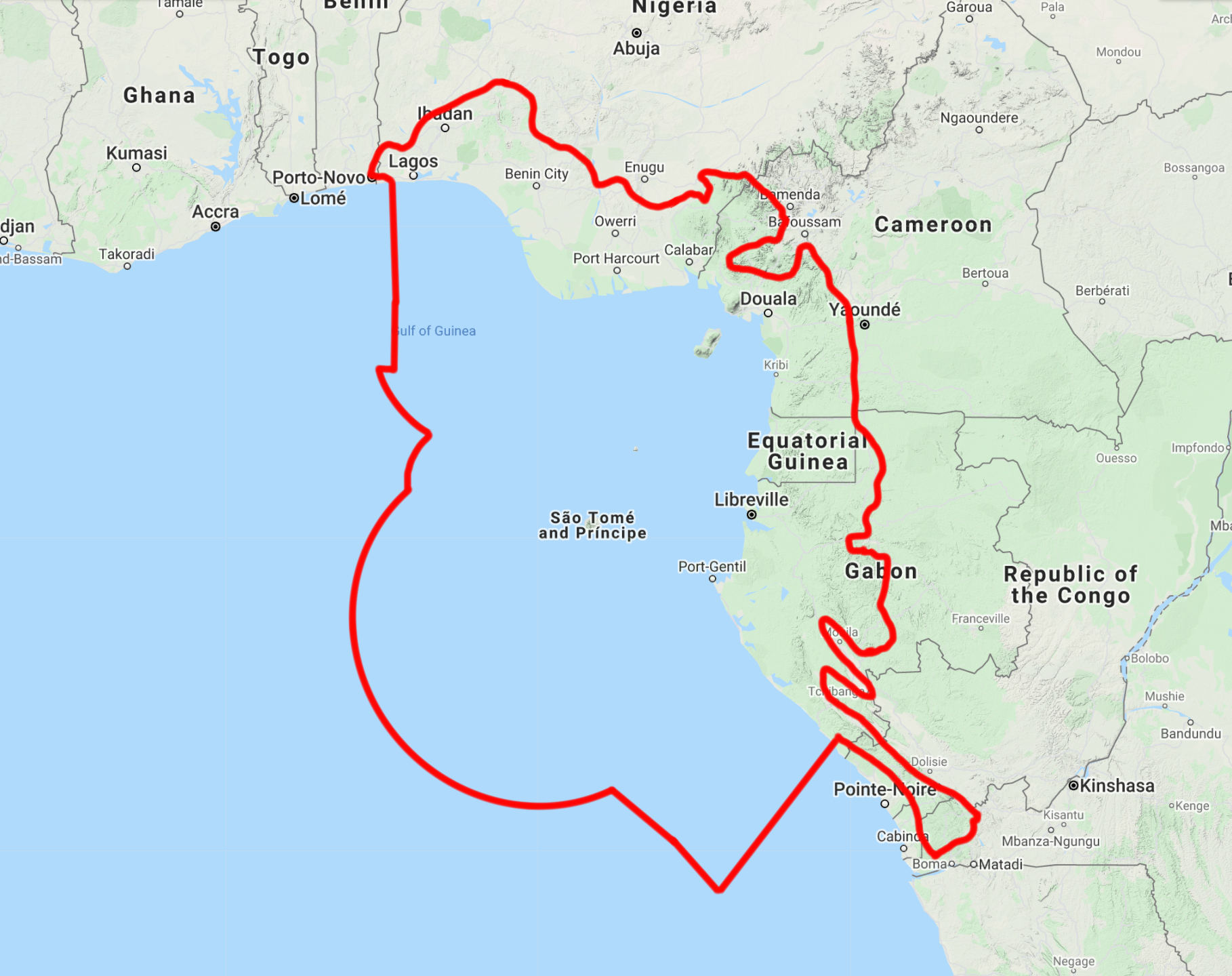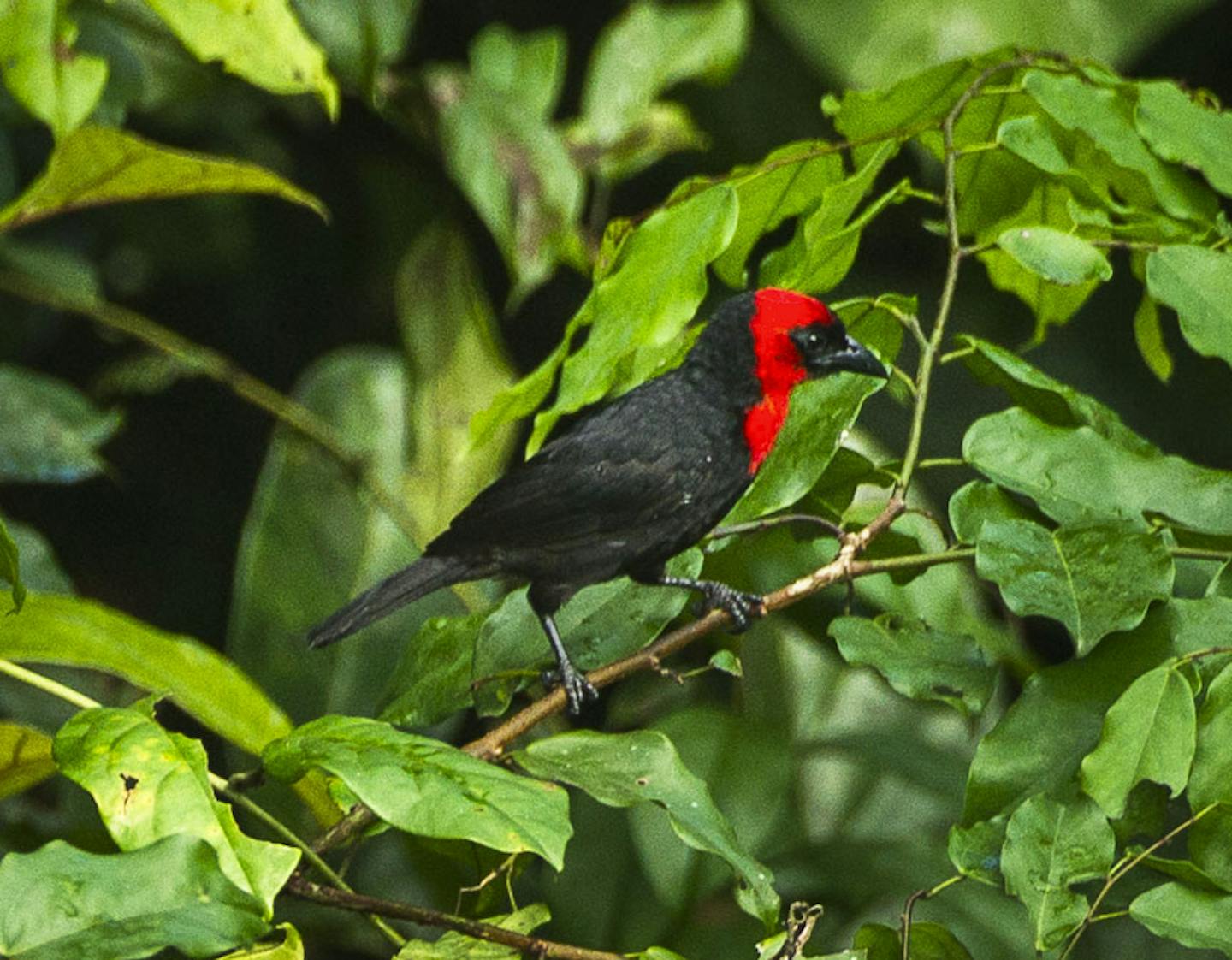Brilliant red and black feathers, meet the African Ibadan malimbe
One Earth’s “Species of the Week” series highlights the flagship species of each of the 844 unique ecoregions contained within Earth’s bioregions.
In a small area in southwest Nigeria dwells an extremely rare songbird. Only found near the city of Ibadan in Oyo State, the Ibadan malimbe (Malimbus ibadanensis) serves its ecosystem as a natural pest deterrent, consuming various insects in the local woodlands and gardens.

Ibadan malimbes are the flagship species of the Nigerian Lowland Forests ecoregion, located in the Gulf of Guinea Coastal Forests & Mangroves bioregion (AT17).
Brilliant feathers and boisterous songs
Bright red feathers on the top of its head and around its face stand out against the black plumage of the Ibadan malimbe’s body. Males can be distinguished from females as their scarlet pattern spreads onto their chest.
This species belongs to the family Ploceidae, including passerine birds, such as weavers, widowbirds, and bishops. Passerines are distinguished from other birds by the arrangement of their toes. Three toes point forward, and one points back, which allows the birds to perch.
These perching birds are also referred to as songbirds, and Ibadan malimbes are one of the most unique. Their sounds include a high-pitched mix of swizzling and wheezing notes.
Hunting for bugs
The bird is around 20 centimeters (8 in) long and can be found throughout the area's lowland forests, farm bush, and neighborhoods. They are often found perched in openings and along edges, making them a charming sight to see among locals.
Foraging in pairs or small groups and with the red-headed malimbe (Malimbus rubricollis), they feed on insects, caterpillars, winged ants, alate termites, and the occasional palm nut. Both bird species help keep insect populations in balance throughout their habitat.
Parenting together
Monogamous, Ibadan malimbes breed with one mate their entire life and build a nest together. The nest is woven from tendrils of climbing plants which have a spiral shape, and strips of palm leaves. In observations, it appears the males take the job of constructing the nest while females line them.
Nests are anywhere from 12 to 20 meters (39- 66 ft) above ground near the tip of a branch of a mature forest tree. The nests have an entrance tunnel of up to 25 centimeters (9.8 in) long and have been described to resemble an “inverted sock.”
One to two eggs are laid by the female and are pale green with small dark brown spots with underlying lilac tones. Females incubate the eggs but once hatched, chicks are fed by both parents. Juveniles sport a dingy orange-colored head and breast until they are grown and their red feathers emerge.
Conservation helps all
Once widespread throughout the region, the Ibadan malimbe population is estimated to have declined by 66% since the 1970s due to widespread deforestation. Data from recent surveys conclude that there are about 2,469 individuals remaining in the wild.
Endangered in conservation status, awareness about the Ibadan malimbe is therefore essential to their survival. Not only as a species with a rightful place in nature but also a creature that consumes insects, aiding farmers and gardeners alike. If brought back, the species could help reduce the need for harmful pesticides in the region.
Interested in learning more about the species and bioregions of Afrotropics? Use One Earth's interactive Navigator to explore bioregions around the world.
Launch Bioregion Navigator


